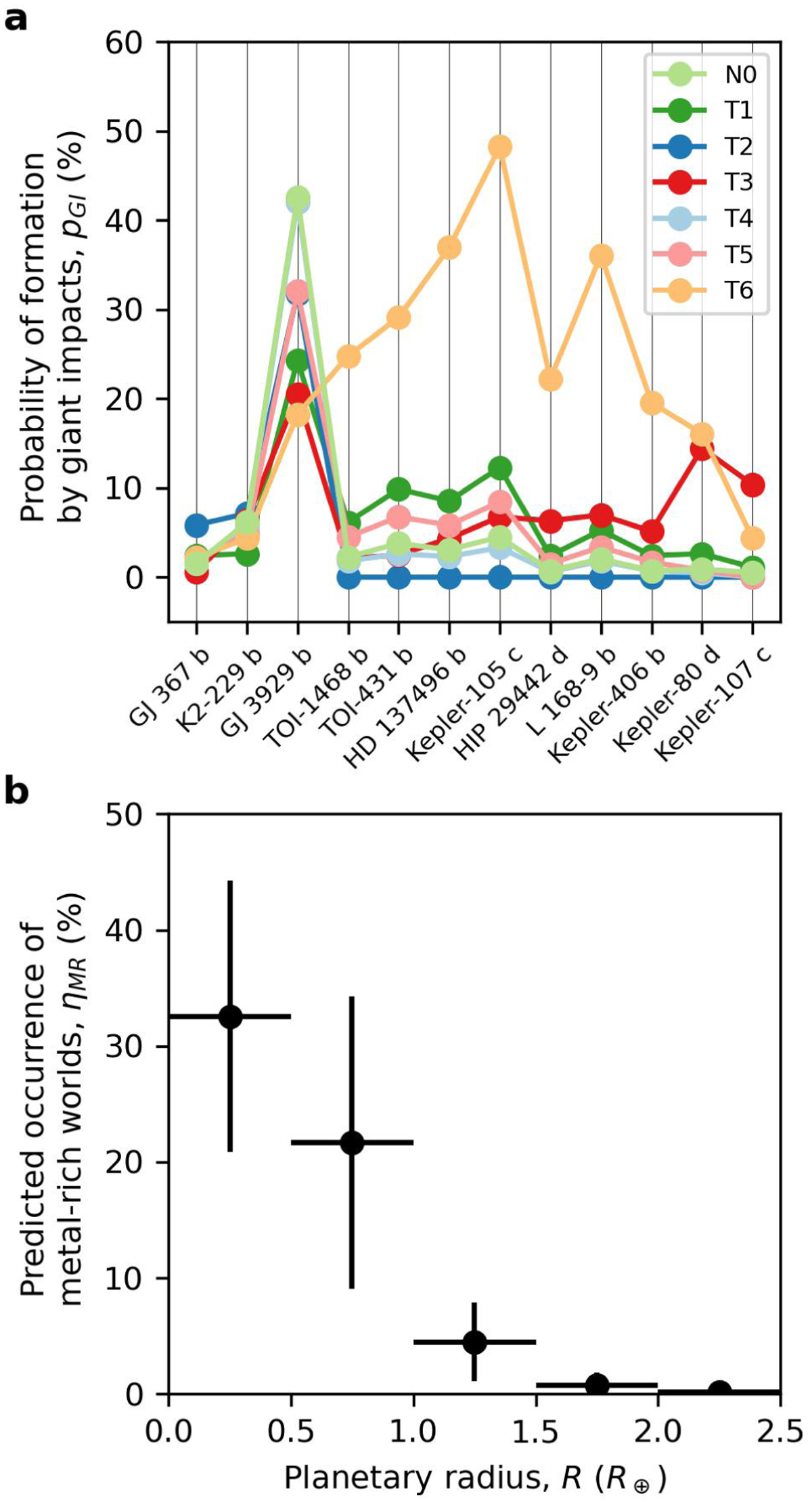Fig. 9

Download original image
Implications of our results for the formation of metal-rich worlds. (a) Probability pGI that a late orbital instability forms metal-rich worlds as large and massive as the observed high-density exoplanets. The probability is computed as described in Section 2.4 and the planets are listed along the x-axis in order of increasing size. (b) Occurrence rate of the modeled metal-rich giant-impact remnants, ηMR, binned as a function of planetary radius, R. ηMR is computed as the fraction of the metal-rich worlds in the post-instability planetary population; the vertical bars indicate one standard deviation uncertainties computed across all simulation scenarios described in Table F.1. While most of the observed high-density exoplanets are too large to be metal-rich giant-impact remnants, sub-Earth-sized metal-rich worlds formed during a late orbital instabilities should be instead relatively common in the local galaxy but are likely too small to be detected by current exoplanetary surveys.
Current usage metrics show cumulative count of Article Views (full-text article views including HTML views, PDF and ePub downloads, according to the available data) and Abstracts Views on Vision4Press platform.
Data correspond to usage on the plateform after 2015. The current usage metrics is available 48-96 hours after online publication and is updated daily on week days.
Initial download of the metrics may take a while.


